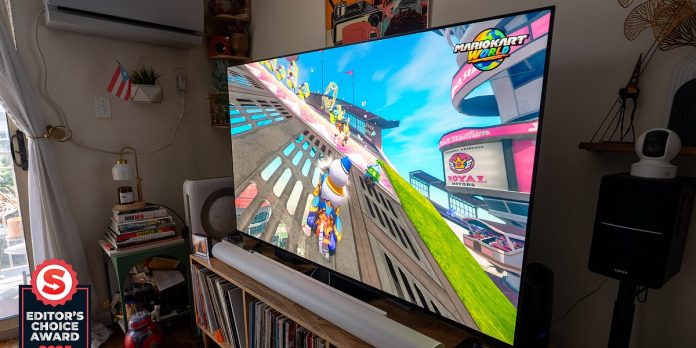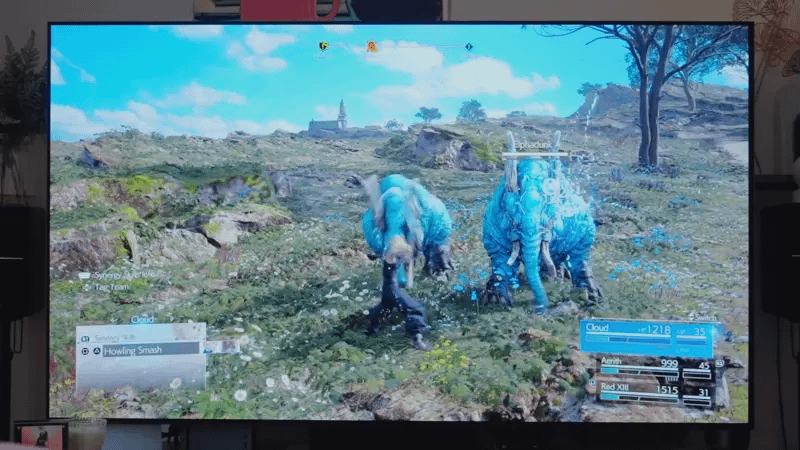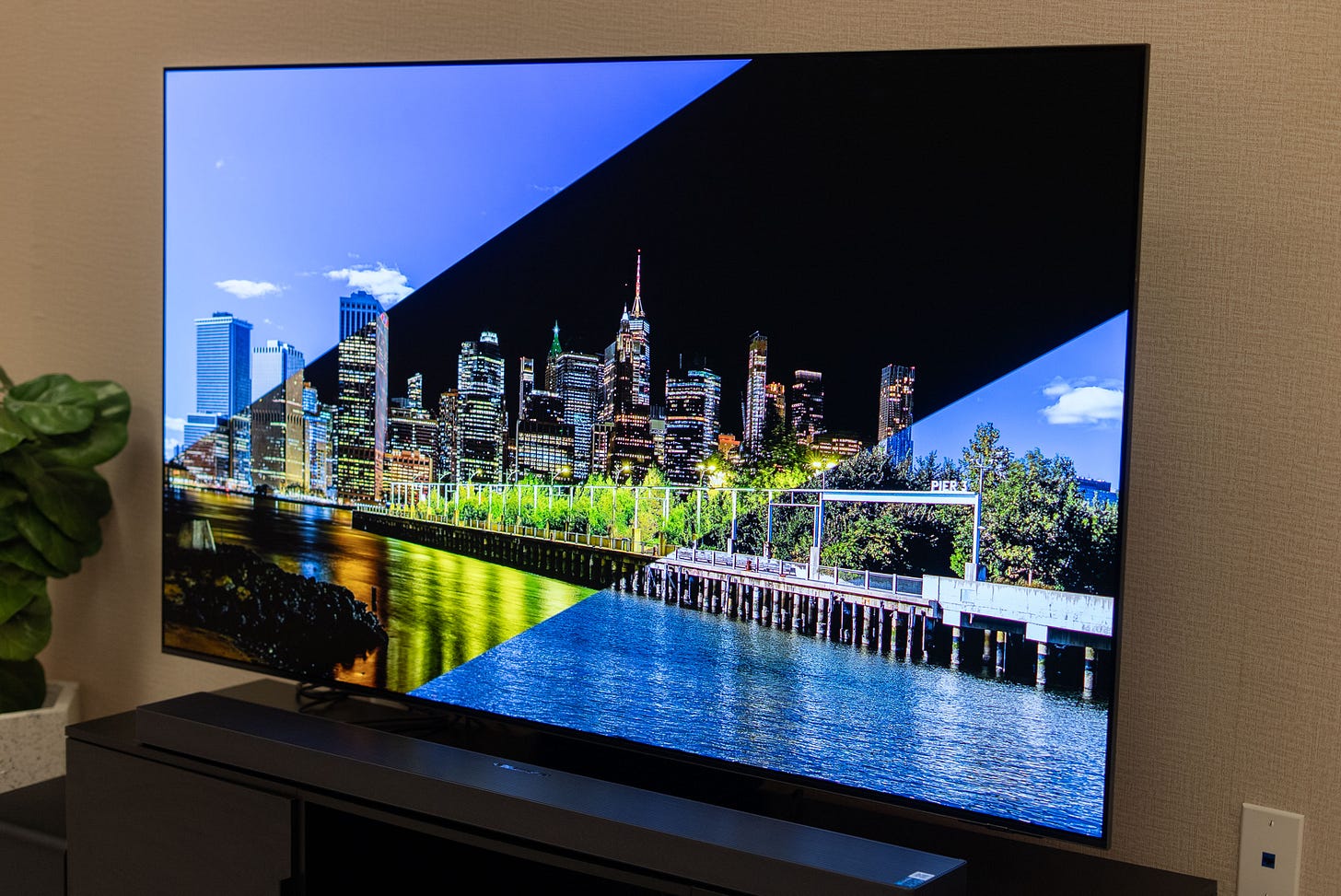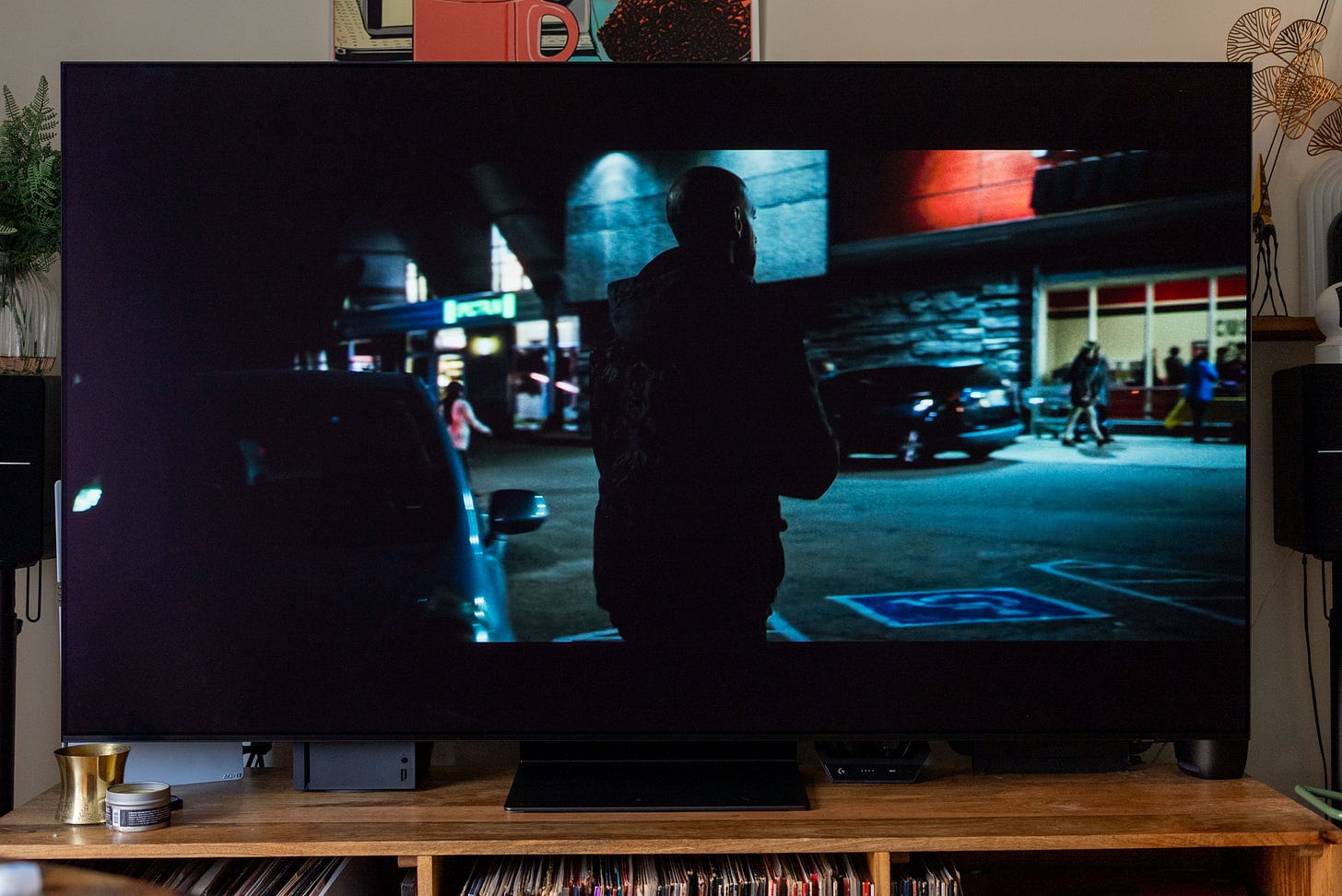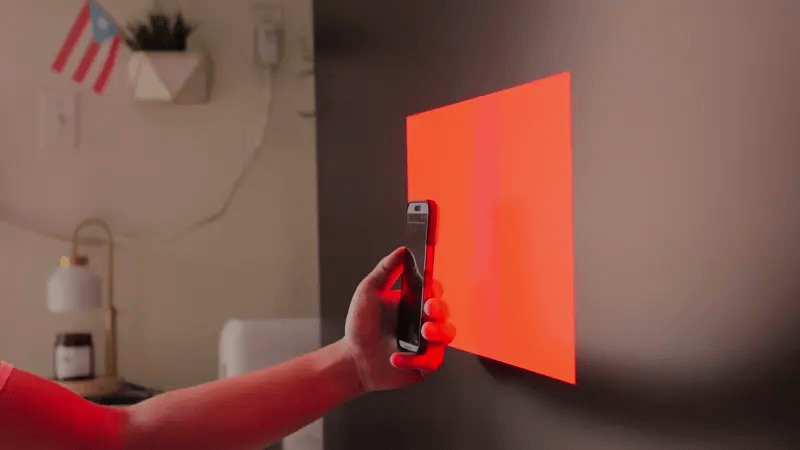-
✅ 💡 3rd gen QD-OLED technology boosts brightness and contrast
-
✅ 🌌 Increased contrast from higher brightness against pure blacks
-
✅ 🫥 Anti-Glare technology erases reflections
-
✅ 🎮 Nvidia G-Sync completes this TV’s total gaming platform support
-
✅ ⚡️ Faster 165Hz refresh rate for gaming
-
✅ 📼 4K AI Upscaling Pro and Auto HDR Remapping revitalizes old media
-
✅ 💵 More affordable than the Sony Bravia 8 II and LG G5 OLED evo
-
❌ 🛠️ One Connect Box needs an upgrade, making it smaller and/or wireless
-
❌ 🔗 Voice Amplifier Pro is now tied to AI picture mode
-
❌ 🔈 Bass could be louder
-
❌ 🌚 Side-viewing angles aren’t great with dark scenes
The Samsung S95F QD-OLED is the total package TV for me in 2025. It’s brighter, more colorful, and faster for gaming. Samsung has also nearly perfected its Anti-Glare technology to eliminate reflections. It also managed to yoink Nvidia G-Sync exclusivity from LG, finally giving PC gamers new choice for a gaming TV. All the while, the Samsung S95F QD-OLED manages to be a more affordable 4K TV among competing flagship models.
This TV features a brighter third-generation QD-OLED screen that makes highlights pop even more against the pure blacks you can only get from an OLED. This new level of contrast makes TV shows, movies, and games look absolutely fantastic.
Now that Nvidia G-Sync has arrived on Samsung’s OLED TVs, you can enjoy the fastest 4K gaming on the S95F. It features FreeSync Premium Pro, which works well with AMD-powered gaming PCs, and also offers VRR support for consoles. Gaming on the S95F feels even smoother with the elevated 165Hz refresh rate, too.
Samsung has also made calibrating the S95F easy in two ways. Firstly, Smart Calibration allows you to tune your TV using just your smartphone. Alternatively, you could have Samsung’s AI adjust your TV on the fly using its onboard ambient light sensors. My favorite thing of all is how good the Samsung S95F QD-OLED makes old-school TV look modern with its 4K AI Upscaling Pro and Auto HDR Remapping AI technologies.
The Samsung S95F is also the cheapest new flagship QD-OLED TV available, starting at $2,229 and $3,299 as tested. That’s mostly due to a technicality, as the only other new flagship QD-OLED TV is the more expensive $2,599 Sony Bravia 8 II. The $2,499 LG G5 OLED evo also stands as a direct competitor, but it utilizes LG’s new quad-stack OLED panel rather than quantum dots.

💻 PC comes to play. Samsung TVs have consistently offered strong gaming support, featuring VRR, ALLM, and GameBar. In 2025, however, Samsung’s QD-OLED TVs gained Nvidia G-Sync support, in addition to the already supported AMD FreeSync Premium Pro. Previously, G-Sync has always been exclusive to LG OLED TVs, such as the LG G5 OLED evo and LG M5 OLED evo. This makes the Samsung S95F QD-OLED an even better gaming TV for all platforms, including Nvidia GeForce-powered gaming PC that can actually push this 4K TV to its full 165Hz refresh rate.
🐎 Motion Xcelerator 165Hz. Games don’t just look visually stunning, they feel incredibly smooth thanks to the S95F’s enhanced 165Hz refresh rate. That’s more than enough to power the 4K 120Hz gaming you can squeeze out of the PS5 Pro and Nintendo Switch 2. 165Hz will lend itself better to high-end PC gaming, especially if you own an Nvidia RTX 5080 or Nvidia RTX 5090 that can handle 4K gaming that fast, and thanks to the addition of G-Sync, you’ll see less tearing, ghosting, and other frame rate-based artifacts.
📺 Brighter 3rd-gen QD-OLED. The S95F features Samsung’s new third-generation QD-OLED panel, which promises up to 4,000 nits of brightness. However, I found that brightness peaked closer to 2,199 nits in my lab testing. That’s still an impressive bump up from the previous S95D’s 1,665 nit peak brightness. This brighter screen also allows the S95F to deliver richer colors and greater contrast against the pure blacks only an OLED screen can deliver. For even higher screen brightness, consider the 83-inch version of this model.
↔️ Bigger screen, brighter tech. The S95F is the first OLED TV Samsung is offering in a larger 83-inch size, and it utilizes an even brighter stacked WOLED panel from LG. I can tell you this screen was searingly bright from our LG G5 OLED evo hands-on.
🌌 Starry sky contrast. Contrast looks even better now that the screen can hit higher peak brightnesses while displaying true blacks. The rain-soaked escape chapter of Last of Us Part I looked gorgeously atmospheric with blinding searchlights piercing through the dreary, rain-soaked night. The Samsung S95F also dodges the black crush issues, which are caused by OLED pixels not turning on when there are subtle details in almost entirely dark scenes. The start of Scicario looks richly dark, but I can still see tiny details in the near darkness, like the graphic on the back of the character’s back.

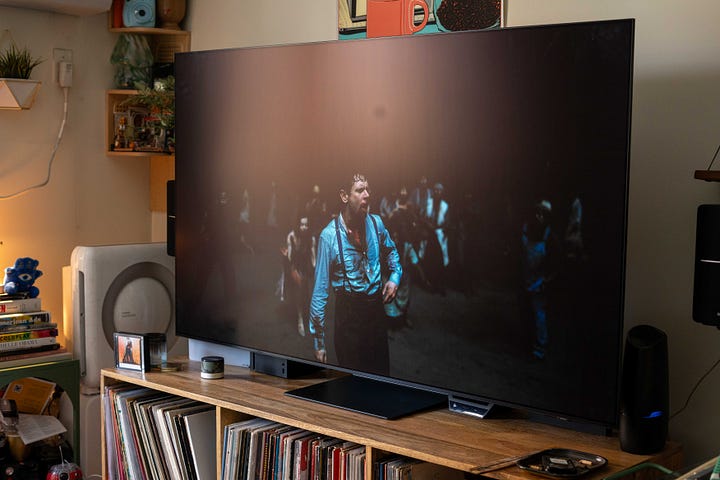
🪩 Goodbye reflections. Last year, Samsung introduced a novel anti-glare finish on the Samsung S95D, and the new Glare-Free technology on the new S95F is even better. It lives up to its name, truly eliminating glare and reflections. Even with sunlight beaming directly onto the screen, I can clearly see what’s on the screen while the light is diffused on the display itself.
📐 Watch your angle. Unfortunately, this Glare-Free tech also slightly reduces the TV’s viewing angle. While trying to watch the TV from an extreme angle, I can see that the TV’s finish is diffusing the image across the screen. Now, it’s highly unlikely you’ll ever want to watch your TV so far off center, but this somewhat eliminates one of OLED’s advantages of wide-viewing angles.
🎨 Smartphone calibration. Calibrating your TV for optimal color accuracy is often beyond the scope of most users, but Samsung’s Smart Calibration feature can automatically adjust the TV for you. All you need to do is hold up your phone while the Smart Things app observes a series of colored windows and screens. It’s an easy process that anyone can complete on either their iPhone or Android device. The impact of the Smart Calibration process was immediate for me as the screen temperature was much warmer, and the HDR tone mapping seemed more nuanced.

🧠 Take the wheel, AI. If Smart Calibration still sounds too complex or calibration just isn’t your bag, you can also let AI decide the best picture for you. Samsung’s AI can utilize the TV’s ambient light sensors to suss out the best picture quality for you. This was definitely less preferable to me, as enabling AI control switched motion smoothing back on. Also annoyingly, Samsung’s Voice Enhancer, which boosts dialogue volume and clarity, is not tied to AI picture mode, unlike in years past when it was a separate feature. This meant I couldn’t boost dialogue and enjoy my self-calibrated picture at the same time.
⚙️ AI processor. Samsung has equipped the S95F with its latest NQ4 AI Gen3 processor. This new chip powers more Samsung AI features than ever, including Click to Search, generative background images, and Live Translate – the last of which I’m most excited to test. Samsung’s AI. AI is at the forefront of this TV, with a new button on the remote that summons Bixby, which now understands you better thanks to LLM training. Thanks to this improved training, you can ask questions in addition to changing the channel or raising the volume.
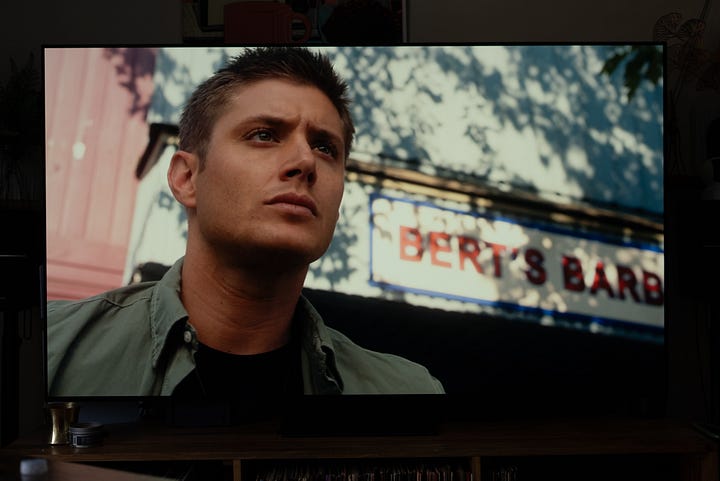

🤖 AI Upscaling. If you love revisiting old TV shows and movies like me, the Samsung S95F is the TV to do it with. Samsung’s new 4K AI Upscaling Pro is fantastic for lower-resolution media. I rewatched some Supernatural and Ocean’s Eleven on the S95F, and I was taken aback by how the shows looked just as I originally watched them, except they were subtly sharper. The Auto HDR Remapping was also spot on, ensuring that scenes didn’t look too bright or too dark.
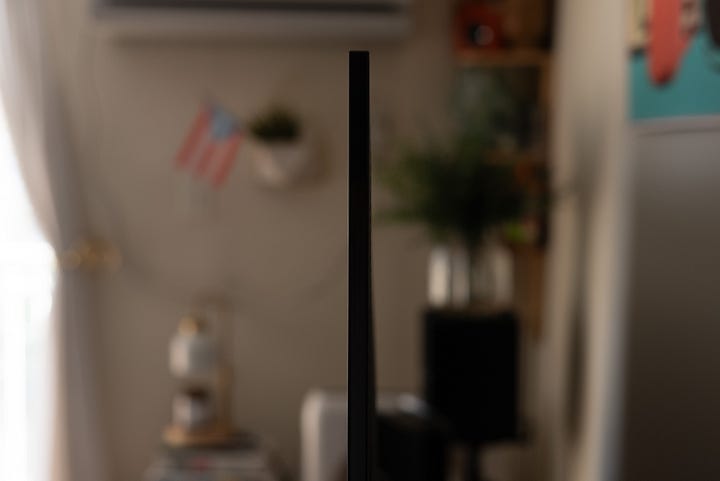
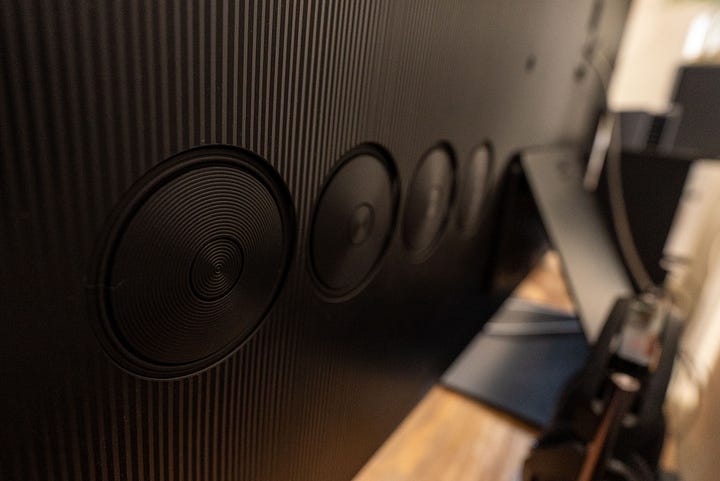
🔊 Same design, better sound. The Samsung S95F is just as impressively thin as its previous iterations. That’s impressive, considering this TV packs a 70W 4.2.2 sound system situated on the back of the screen. This year’s TV makes dialogue sound especially clear and present, along with generally greater sound quality and body. The bass remains adequate for movies, shows, and games, but it could always use more bass to really carry the impact of Spider-Man’s punches while playing with the PS5 Pro.

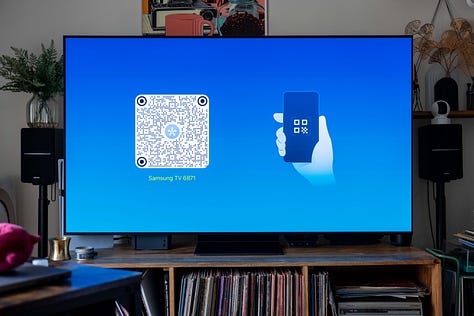
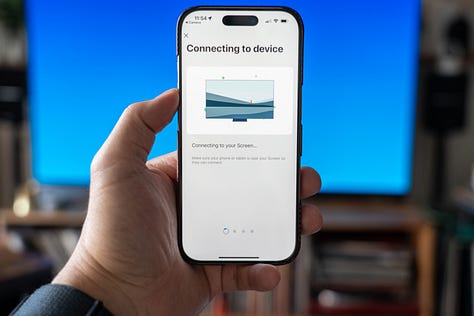
🧵 Same One Connect Box again. This is the third TV Samsung has launched with the same One Connect Box design since the S95C. Samsung has since developed a smaller One Connect Box for the Samsung QN990F Neo QLED and even a new wireless one for the Samsung Frame Pro. There’s no reason the S95F shouldn’t have also gotten a smaller or even wireless external input box to match its incredibly thin profile.
💵 The best QD-OLED price. As it stands, the Samsung S95F is the most affordable 2025 flagship QD-OLED TV. Although $2,229 might not sound inexpensive for a 55-inch TV, it’s a lot cheaper than $3,299 for the new Sony Bravia 8 II. LG, meanwhile, has seemingly steered away from QD-OLED, opting for WOLED for the LG C5 OLED evo and its proprietary four-stack WOLED in the LG M5 OLED evo.
-
✅ 🌃 You want a bright, colorful 4K TV with pure blacks
-
✅ 🎮 You’re gaming on PC and/or consoles, this TV will support all your platforms
-
✅ 🎨 You want a calibrated picture without the technical skill or tools
-
✅ 🔊 You want to hear TV/movie dialogue without a soundbar
-
✅ 📼 You like rewatching classic TV and movies remastered in 4K HDR
-
❌ 🛜 You want a wireless 4K TV (get the LG M5 OLED evo)
-
❌ 🌟 You want a brighter 4K TV (get the LG G5 OLED evo)
Kevin Lee is The Shortcut’s Creative Director. Follow him on Twitter @baggingspam.
